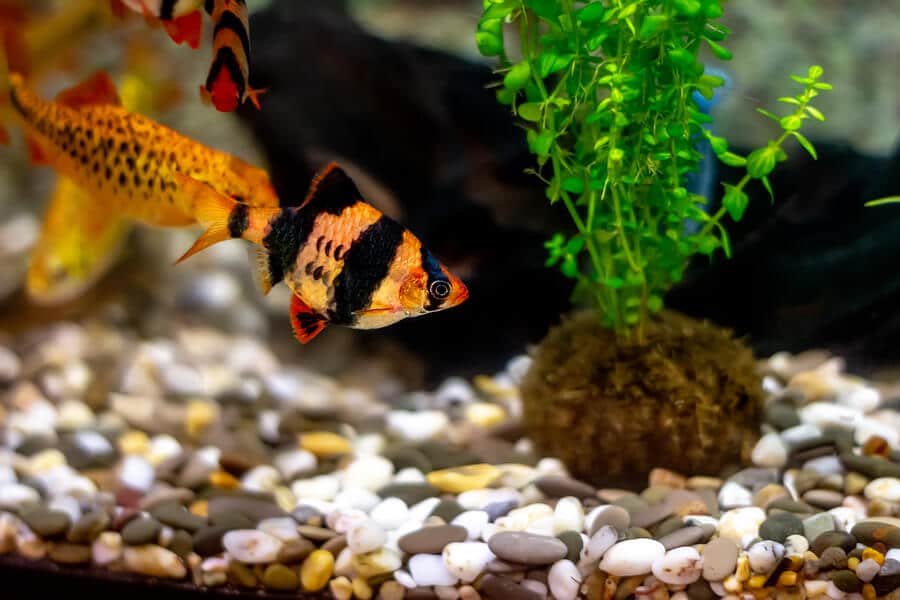Water Parameters for Home Aquariums
An aquarium is not just a tank of water. For a healthy ecosystem to thrive, great care and regular aquarium maintenance are needed. Water parameters for home aquariums must be checked regularly to ensure a stable environment for the inhabitants of the aquarium.
In fact, if your aquarium is working correctly and everything is in order, there should be lots of helpful bacteria in your tank. That’s right! Bacteria may get a negative image at times, but it is vitally important for the well-being of your aquarium fish and the environment they live in. Here’s what happens:
Bacteria begin to grow in the gravel and filter in the fish tank. This bacteria helps break down the otherwise-toxic levels of chemicals such as ammonia and nitrate (which are found in fish waste). If these levels of ammonia and nitrate are left unchecked, it will become a lethal environment for the majority of fish that can live in that environment.
Aquarium Water Quality Parameters
There are a number of important aquarium water parameters that every fish tank owner should take into account. For an aquarium to find success, a proper and stable set of parameters must be established, because a high amount of nitrogen compounds (nitrate, nitrite, and ammonia) can kill fish. This is why water chemistry, fish waste, and bacteria are so important for the health of the aquarium.

Aquarium Water Testing Parameters
To prevent ammonia buildup, a proper nitrogen cycle needs to happen inside the tank. Essentially, it's the process of breaking down waste that is otherwise harmful to fish in the aquarium. Nitrifying bacteria help convert organic fish waste into nitrate. Here are the three major steps of the cycle:
- By adding certain types of hardy fish to the newly installed aquarium, the process will be kickstarted. Waste will quickly break down into ammonia; waste meaning uneaten fish food and fish excrement.
- Nitrosomonas (bacteria) will begin to form and colonize in the aquarium after ammonia forms in the fish tank. This bacteria will then oxidize the ammonia that is present in the fish tank and produce nitrite as a byproduct of this process.
- Nitrobacter, another type of bacteria, will then convert the nitrite into a less-toxic substance known as nitrate.
This is an ongoing process which helps stabilize the ecosystem of the aquarium and keep your fish healthy.
Why Are Water Parameters for Home Aquariums Important?
With no nitrogen cycle, the aquarium would be an uninhabitable and toxic environment. Introducing food, plants, and fish to the aquarium will begin the nitrogen cycle. Here are a few numbers to help get you started on the path to healthy aquarium levels:
- Both types of bacteria that assist in the nitrogen cycle like alkaline environments. That means that your aquarium should have a pH level of 7.2 to 8.5. A consistent and stable level is very important for the nitrogen cycle.
- Nitrifiers (nitrifying bacteria responsible for the nitrogen cycle) are very active around 68-86 degrees fahrenheit. The metabolism of these bacteria will drop below 50 degrees fahrenheit; temperatures greater than 95 degrees fahrenheit will threaten the bacteria.
- To perform their task of aerobic respiration, nitrifiers need oxygen.
Because adding new fish (otherwise known as changing the environment’s bio-load), we recommend adding new inhabitants slowly (i.e. - a few at a time). An increase in nitrifying bacteria is expected any time new fish are added to the aquarium.

Proper Water Testing Parameter Levels
Here is a list of the proper ranges to make sure your fish are living in the safest environment possible:
- Temperature: 74-82 degrees fahrenheit. Avoid sudden shifts in temperature. An aquarium heater can help keep a stable temperature.
- Alkalinity: 120 to 300 mg/L. Low alkalinity can cause rapid shifts in pH levels in the tank, which can be potentially deadly to fish. You must test the tap water alkalinity and change water as required.
- Hardness: 100 to 250 mg/L. Hardness is just a synonym for the amount of magnesium and calcium that are present in the water. Soften the water if there is a high amount of hardness. High levels of hardness usually will indicate a high pH level as well.
- Nitrate: 0.0 to 40 mg/L. Keep these levels low, as high levels will encourage algae growth.
- Nitrite: 0.0 to 0.5 mg/L. You can add aquarium salt to the aquarium to reduce nitrite toxicity (1-3 tsps per gallon), as nitrite will reduce the oxygen content in your fish’s blood levels.
- Ammonia: 0.0 to 0.25 mg/L. After the aquarium has gone through a nitrogen cycle, there should be little to no ammonia. If it is a very new aquarium, an ammonia neutralizer may be required.
Achieve the Proper Testing Parameters For Your Aquarium!
If you have an especially large aquarium, you may need devices such as a canister filter, an external power filter, and an under-gravel filter. If you’re not sure where to start, you can contact the professionals at Crystal Oceans! With decades of experience in saltwater aquariums, freshwater aquariums, and water feature maintenance, we know what it takes to create the ideal conditions for your fish to thrive.